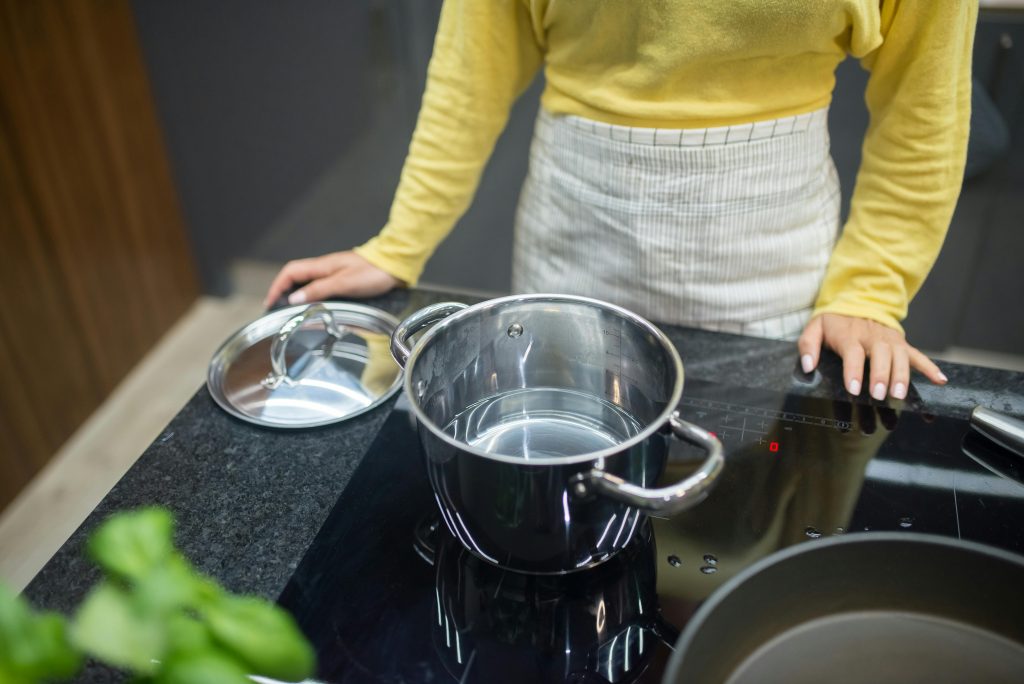
🥘 Induction Cooktop Cooking Tips: Do’s and Don’ts
Induction cooktops are fast, clean, and precise—no wonder they’re growing in popularity. Still, to get the most out of your cooker and prolong its lifespan, it’s important to follow some crucial guidelines.
✅ Do’s: Best Practice for Efficient Use
- Keep cookware clean and flat – Dirt or warping on pot bottoms can reduce heat efficiency.
- Wipe spills promptly – Food residue can burn onto the ceramic surface if left unattended.
- Read the manual – Learn your cooktop’s specific settings and safety features before first use.
- Use induction-compatible cookware – Cast iron or magnetic stainless steel work best.
- Protect the cord and controls – Keep cables away from the heat and avoid placing hot pots on touch panels.
🚫 Don’ts: What Common Users Often Overlook
- Don’t use the cooktop as storage – Even off, the surface is fragile and can be scratched.
- Avoid empty-heating pots – This can damage both your cookware and cooktop.
- Keep plastic, foil, and cards away – These items can melt or be damaged by induction magnetic fields.
- Never leave utensils on the burner – Forks or spoons can heat up and cause burns.
- Don’t spray water directly – Moisture can short electronics under the ceramic.
- Skip power washing – Use only a soft cloth or recommended cleaning spray.
- Avoid warped cookware – Poor contact reduces cooking efficiency and can damage the surface.
- Prevent heavy impacts – Dropping objects may crack the glass-ceramic surface.
✅ FAQ – Common Questions About Induction Use
Q: How do I know if my pans are induction-compatible?
A: Check for a flat, magnetic-bottom base using a small magnet—if it sticks securely, it works.
Q: Can I use regular cleaners on my induction cooktop?
A: Yes—just use non-abrasive cleaners and a soft cloth designed for glass or ceramic surfaces.
Q: Why won’t my induction cooktop heat?
A: It could be due to incompatible cookware or an empty pot—ensure your pan is induction-ready and contains food.
Q: Is it safe to place hot pans on the control area?
A: No—that can damage sensors and buttons. Regularly reposition pots to stay within the heating zone.
Q: Will dropping a utensil crack the cooktop?
A: Yes—a heavy metal object can chip or break the glass-ceramic surface. Be gentle!
🔧 Bonus Tip: Cleaning Without Damage
Instead of harsh chemical sprays, try this:
DIY Induction Cleaner Recipe
- 1 cup vinegar
- 1 teaspoon baking soda
- Soft microfiber cloth
Gently wipe the cooktop after it cools. For stubborn stains, lay a damp paper towel soaked in vinegar for 10 minutes, then scrub lightly.
🧲 A Quick Word on Cookware
Your pot is half the equation. Consider investing in a tri-ply magnetic stainless steel set, like those from:
These sets have flat bottoms, resist warping, and ensure even heat transfer.
🔒 Final Thoughts
Induction cooking is remarkably efficient and safe—if treated with care. By following these simple do’s and don’ts, you can enjoy faster meals, spotless surfaces, and a longer-lasting appliance.
Treat your induction cooktop well, and it will return the favor, meal after meal.
Leave a Reply
You must be logged in to post a comment.